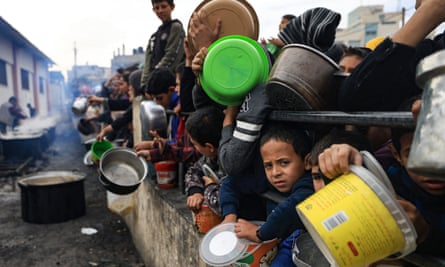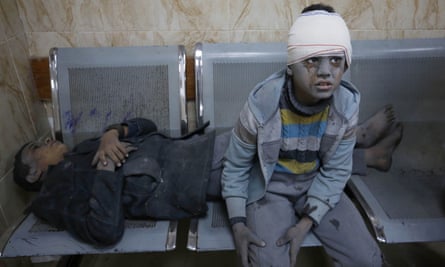An Israeli airstrike has killed a veteran aid worker and more than 70 members of an extended family in Gaza, the UN agency that employed him said, calling for an urgent ceasefire to protect civilians and humanitarian workers.
Issam al-Mughrabi, 56, died with his wife, Lamya’a, five children and scores of other relatives in an attack near Gaza City, the head of the UN Development Programme said. He had worked for the UNDP for nearly 30 years.
“The loss of Issam and his family has deeply affected us all,” the UNDP administrator Achim Steiner said. “The UN and civilians in Gaza are not a target. This war must end. No more families should endure the pain and suffering that Issam’s family and countless others are experiencing.”
The children were named as Mohammad, Suad, Lama, Luai and Obaideh, with the youngest aged 13, and the oldest, 32.
News of their deaths came soon after the UN passed a resolution calling for a massive increase in aid shipments to Gaza. However, it did not demand a suspension of hostilities, after the US said it would veto any resolution that did.
Instead, it appealed only for the creation of “conditions for a sustainable cessation of hostilities”. The US insisted on removing a clause giving the UN exclusive control of humanitarian deliveries.
Israel has said it will keep fighting until it has reached its goal of “destroying Hamas”, and needs to check all aid deliveries for security reasons. The US, its staunchest and most important ally, says Israel has a right to defend itself.
Aid agencies trying to contain the imminent threat of famine and deadly epidemics said they welcomed the increase in aid, but that getting supplies into Gaza was only the first step in meeting desperate needs.
Logistics in the strip are extremely challenging because roads and trucks have been bombed, there is little fuel, security is fraying as hunger and desperation grow, and agency staff are trying to work through mass displacement and the deaths of relatives, colleagues and friends.

This week the death toll from Israeli strikes inside Gaza climbed above 20,000, the majority of them women and children, according to Hamas-run health authorities. Thousands more are thought to be buried under the rubble of collapsed buildings.
Airstrikes in Nuseirat, central Gaza, on Friday killed 18 people sheltering in one house, and a journalist from Hamas’s Aqsa TV channel and two of his relatives.
At least 69 media workers have been killed in 11 weeks of conflict, more than have ever been killed in a single country over an entire year, according to the Committee to Protect Journalists.
The vast majority were Palestinians working in Gaza, but three were Lebanese, and four were Israelis who died on 7 October, when Hamas fighters broke through the border into Israel and killed about 1,200 people, mostly civilians. They kidnapped more than 200 others as hostages and took them to Gaza.
Israel declared war after that attack and has said said it will not stop fighting until Hamas is “destroyed”. The chief military spokesman Rear Admiral Daniel Hagari said late on Friday that its forces were “nearing full operational control” in the north of Gaza.
Fighting raged around Gaza City on Saturday, Reuters reported, citing residents, with thick smoke pooling over northern Jabalia, Gaza’s largest refugee camp, and persistent airstrikes and shelling from tanks which had advanced closer.
Israel has urged civilians to leave northern Gaza since their ground operation began in October. But even areas designated as safe in the south are being bombed, and with shelters being overcrowded and short of food and water, some residents decided to try to wait out the fighting at home.
“Where should we go to? There is no place safe,” Ziad, a medic and father of six, told Reuters by phone. “They ask people to head to [the central Gaza city of] Deir al-Balah, where they bomb day and night.”

The latest evacuation orders cover Bureij, a refugee camp in central Gaza that Israel had formerly declared part of a safer zone. More than 150,000 peoplewere affected by the order, said Thomas White, the Gaza director at UNWRA, the UN agency for Palestinian refugees.
The intensifying impact of Israeli airstrikes and the blockade mean many internal refugees now travel on foot or in donkey carts. Almost all of Gaza’s population has been displaced, some several times.
“The Israeli army just orders people to move into areas where there are ongoing airstrikes. No place is safe, nowhere to go,” White said in a post on X.
Israel blames Hamas for civilian casualties, saying the militant group uses civilian infrastructure, including hospitals and schools, to shield military facilities. Hamas denies using people as human shields.







